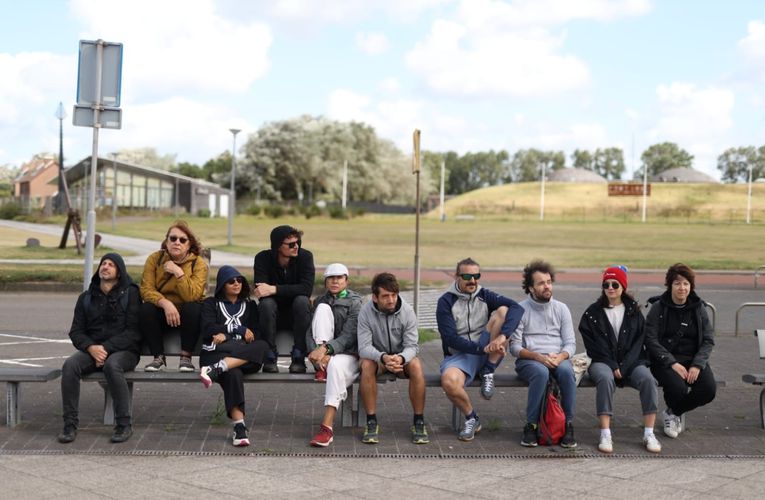
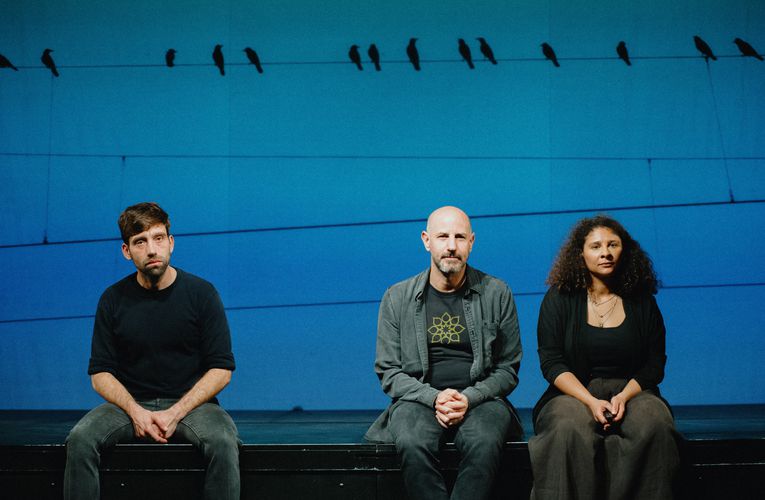
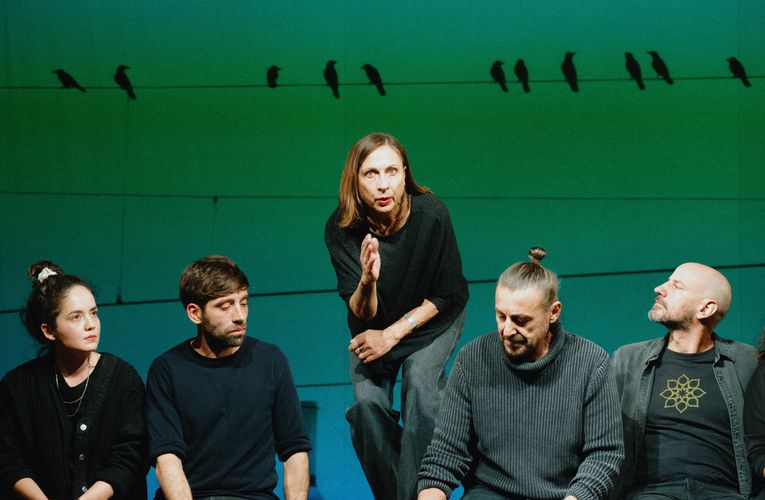
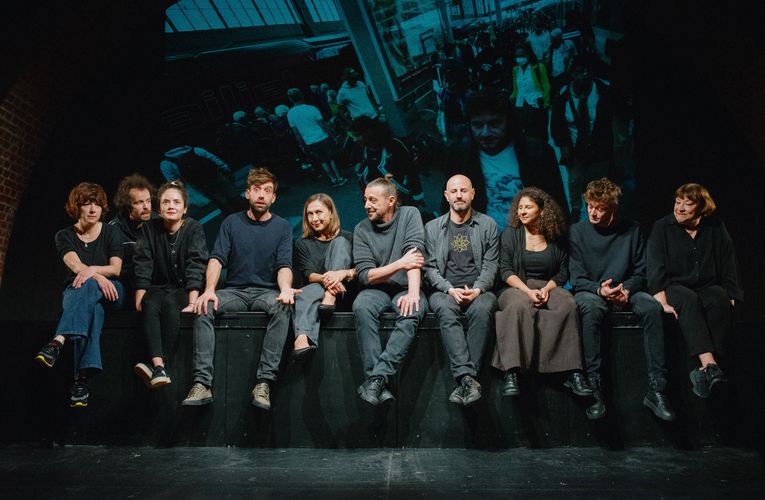
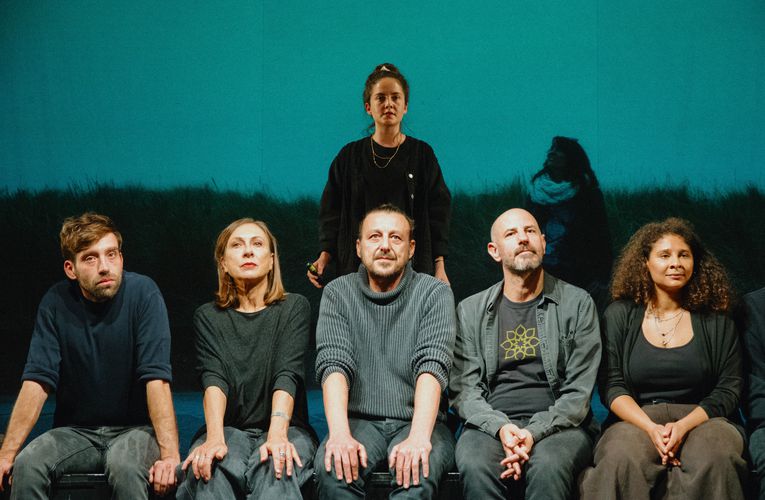

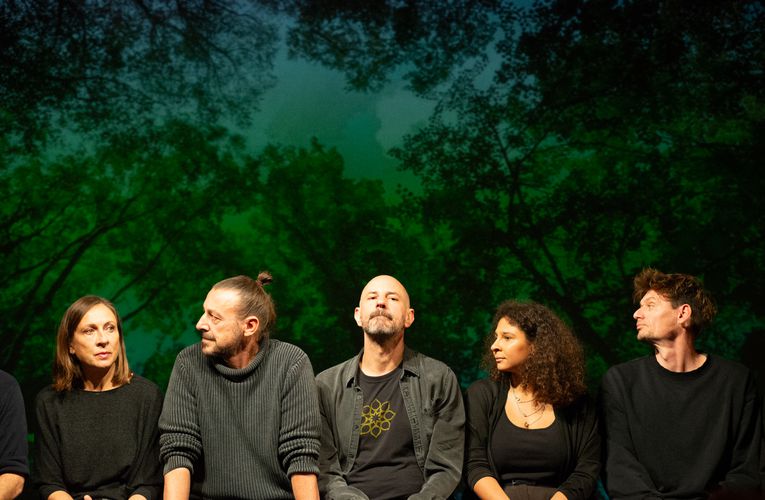
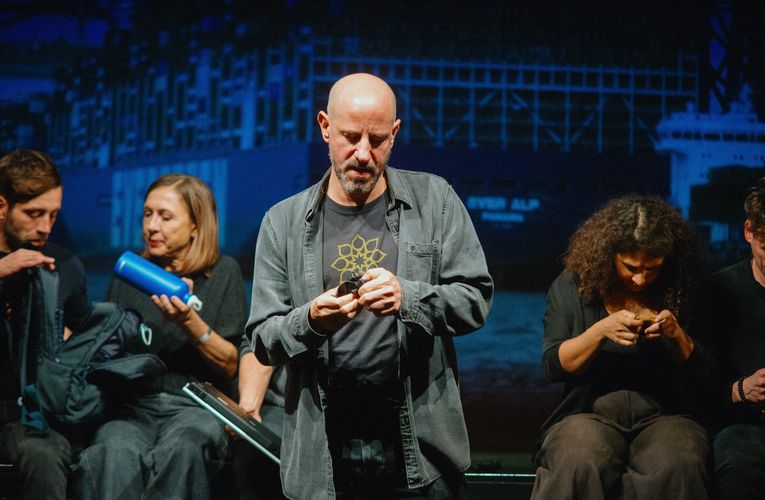
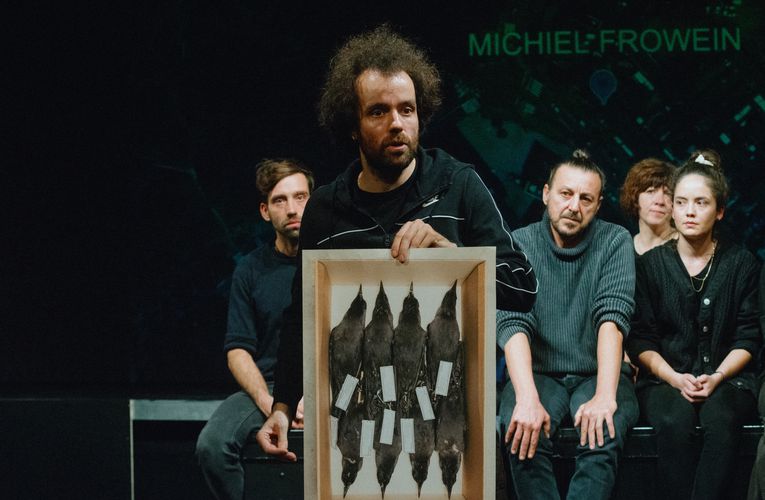
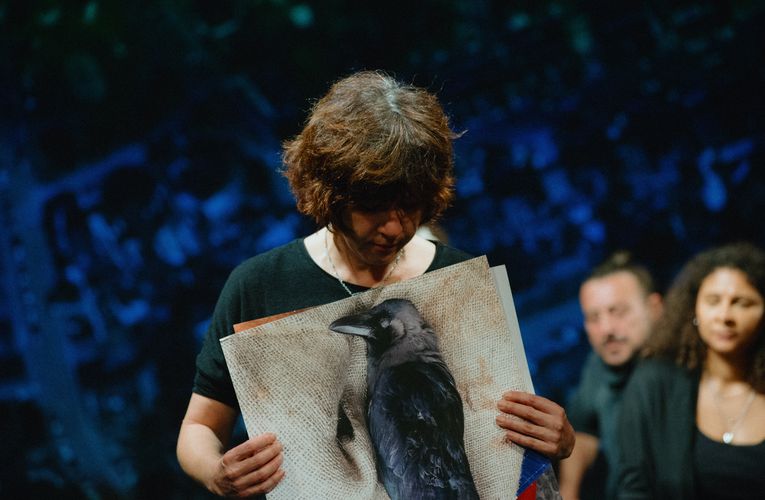
The Flock
- Iztok Drabik Jug
- Lara Wolf
- Dramaturgy: Goran Injac, Gregor Zorc
- Dramaturgy assistant (internship): Nastja Virk
- Set design: Žiga Divjak
- Costume design: Tina Pavlović
- Music: Blaž Gracar
- Lighting design: Borut Bučinel
- Language consultant: Mateja Dermelj
- Photos by: Peter de Krom, Arie den Hertog, Bram Langeveld, Borut Bučinel, Žiga Divjak
- Stage manager: Liam Hlede
The project was inspired by Thom van Doreen's book The Wake of Crows.
Crows can be found almost everywhere that people are, from tropical islands to deserts and arctic forests, from densely populated cities to suburbs and farms. Across these diverse landscapes, many species of crow are doing well: their intelligent and adaptive ways of life have allowed them to thrive amid human-driven transformations. But some of them are critically endangered, and despite the efforts to preserve the species, on the verge of extinction.
The starting point for The Flock has been a story about an atypical flock of crows that settled in the Netherlands by accident, because of the climate change and the destroyed balance on the planet. The birds have adjusted their lifestyle and lived with the local crows. But because they looked different, they remained noticeable. Even though they did not breed excessively and the population remained small, the city authorities sentenced them to extermination and destroyed them completely.
The project, devised by Žiga Divjak and the team, explores the coexistence of different living species on the planet and at the same time touches the question of migrations, searching for a better life and the (in)ability to integrate.
Listing data about crows is dramaturgically framed by another narrative: a study and research trip of the theatre cast and crew to the Netherlands […] We follow their journey via a PowerPoint presentation filled with photos. Some are travel photos, postcards, even humorous, as travel photos in different circumstances tend to be; others are more 'artsy': they try to show a specific punctum, as Roland Barthes wrote, and hit us with full force. The light in them is often the slanting light of the northern sun that gives them (well, some of them at least) a particular tone: a premonition of an apocalypse that is no longer at our door, but inside; an apocalypse that has imbued everything without us noticing and we took it all in, internalised it, domesticated it. Generally speaking, the visual element in the production is strong, although never distinct or particularly highlighted. It actually comes without bravado, but is efficient, perhaps even stronger than the verbal part. The large photos that actors show around the auditorium are also very suggestive: they feature dead birds, stacked, wings aligned, like in coffins, each with a number. Death is catalogued and purified, as if it were harmless, abstract, technical, bureaucratic … the black and white photos remind one of the photos of dead bodies from concentration camps, from another systemic decree, from the ‘final solution’ to another question, and this association is not coincidental. […] Žiga Divjak’s ecotheatre performance brings a seemingly small story of 27 birds from the north-west of Europe, but it turns into a massive metaphor for many other things: our treatment of other living creatures, including other people, nations and races; our treatment of the Earth; and the systemic violence that became a part of our everyday life, which is so normalised that we are no longer aware of it.
This seemingly simple tale of ‘limiting’ a population of an animal species thus unobtrusively opens into a symptomatic node of contradictions of the overheated capitalism, where the questions of the causes of modern migrations and the consequences of global exploitation simmer in the background, as well as the rhetoric of the power and the technocratic insensitivity of the apparatus of the system. In the meantime, the pictures of dead birds multiply and the acting space keeps shrinking. In it the ensemble wearing everyday clothes in black and dark colours (costume designer was Tina Pavlović) resembles more and more the endangered flock and is decimated together with it – until with the last murdered crow and the epilogue, the sensitive and aesthetically clean production also ends.
All of them, clad in grey, black and denim, remind us of grey-black crows, and the stage looks like that, too: no props, with PowerPoint slides in the background. The actors begin with the story about the crows and then intertwine the documentary narrative about the events in Hoek van Holland with their own experience in the Netherlands, which functions as a travel lecture. The actors onstage are themselves, Lara Wolf speaks about her Colombian great-grandmother, Iztok Drabik Jug takes off his clothes, reading their countries of origin from the labels (Bangladesh, Pakistan, India, China) and they all recount their train trip to the Netherlands and talk about how immense the ports, where they load and unload the enormous amounts of cargo, are. Their narrative veers from the travelogue in the PowerPoint presentation and focuses again on the eradication of crows in Hoek van Holland; it is supplemented and upgraded with the quotes from emails exchanged between Sabina Rietkerk, who wanted to let the crows live and the NVWA (the agency responsible for the food and consumer goods safety in the Netherlands) which decided that the crows be exterminated.
The Flock stretches between artivism and documentarism. All the means of theatrical expression are in the function of the narrative and the element of spectacle is reduced to the minimum. […] Shedding light on the problem of a flock of crows which has experienced a culling and extermination is in a way a thematical continuation of the play 6. In form as well, Divjak continues his poetic of an empty stage with merely functional signs and gestures, the narrative way of acting and the condensed narration, with the sound and lighting – also minimalised – creating the atmosphere. The problems that the flock of indigenous crows opens have a clear analogy in the momentary European present – in the migration of people, as well as of other animal and plant species that we can call foreign, sometimes invasive. But we never ask ourselves where the everyday consumer goods – clothes, technical and other devices, all labelled as Made in China, Japan, Vietnam, Cambodia and others – come from.
- Week of Slovenian Drama, Kranj, 2 April 2025
- Župančič award for acting to Blaž Šef, also for his role in The Flock (2025)
Sabine Rietkerk, Norman Deans, Arie den Hertog, Harm Niesen, Thom van Dooren, Dirk Vermeulen, Erwin Kompanje, Bram Langeveld and Peter de Krom